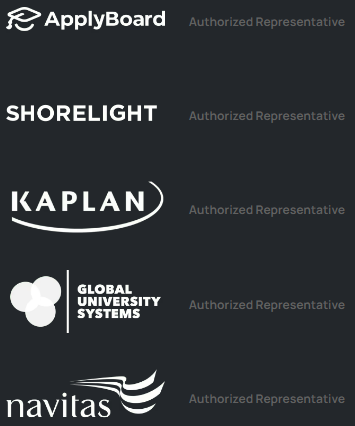Cost of Studying in the US – The United States is the world’s leading global higher education hub, and it is famous for its modern study programmes, a great variety of subjects, and a campus atmosphere. However, when choosing a country to study in the USA, there are many things to consider, like the cost of studying in the USA, which has various aspects such as tuition fees, accommodation, and other related costs that differ across institutions and geographic regions.

The USA is a favourable destination for students across the globe because of its world-class education and infrastructure—also, the security of having a high-paying job after completing their degree.
This article also places a financial focus on learning in the US with details of the contrast between costly and cheap colleges, the cost of learning in the US for popular courses, and input on scholarships and education loans. By the end of the section, you will understand the financial picture and ways to manage money to achieve academic goals.
Recent Trends in the Cost of Studying in the US
A recent analysis shows that the other expenses are related to the cost of attending universities in the US. The statistics from the College Tuition Inflation Rate Report by Education Data show that the annual inflation rate of higher education institutions in the US is 8%. This shows that tuition fees have been rising over the years, making the price expensive an issue to consider when choosing a university.
NCES data shows that the cost per credit hour for a 4-year program in private non-profit academic institutions for 2023-24 was about USD 41,540. At the same time, the cost of one year of an undergraduate program at Harvard University was USD 84,413. Further insights and comparisons across various years are available on the College Board’s Trends in College Pricing.
Tuition Fees by Type of Institution
The following table provides a breakdown of tuition and associated costs by type of institution for the 2023-24 academic year:
| Institution Type | Tuition & Fees (USD) | Room & Board (USD) | Total Cost (USD) |
| Public Two-Year Colleges | 3,860 | 9,500 | 13,360 |
| Public Four-Year Colleges (In-State Fees) | 10,950 | 11,950 | 22,900 |
| Public Four-Year Colleges (Out-of-State Fees) | 28,240 | 11,950 | 40,190 |
| Private Non-Profit Four-Year Colleges | 41,540 | 14,030 | 55,570 |
Cost of Studying in the US: Affordable Colleges with Fees
The following table highlights affordable and expensive colleges in the US, including tuition fees, QS rankings, and popular courses offered:
| University Name | Tuition Fees (USD) | QS Ranking 2024 | Popular Courses Offered |
| Queens College | 18,000 | 801-1000 | Business, Computer Science, Liberal Arts |
| Florida Atlantic University | 21,000 | 1001-1200 | Engineering, Business, Psychology |
| Roosevelt University | 31,000 | 1201+ | Performing Arts, Biology, Hospitality |
| Arkansas State University | 14,000 | 1001-1200 | Agriculture, Engineering, Business |
| Concordia University Chicago | 22,000 | 1201+ | Education, Business, Health Sciences |
| Arizona State University – Tempe | 32,000 | 179 | Engineering, Data Science, Business |
| University of Kansas | 27,000 | 601-650 | Pharmacy, Law, Computer Science |
| Central Michigan University | 24,000 | 1001-1200 | Journalism, Education, Business |
| Louisiana State University | 26,000 | 701-750 | Petroleum Engineering, Business, Biology |
| Kent State University – Kent | 20,000 | 801-1000 | Fashion Design, Psychology, Business |
Cost of Popular Courses in the US
The cost of education can also vary depending on the field of study. Below are some popular courses and their estimated costs:
- Engineering: USD 35,000 – USD 60,000 per year
- Business Administration: USD 30,000 – USD 50,000 per year
- Medicine: USD 40,000 – USD 70,000 per year
- Computer Science: USD 35,000 – USD 55,000 per year
- Humanities: USD 20,000 – USD 40,000 per year
Average Cost of Living in the US
The cost of living in the US can be stretched under living, feeding, and study costs. Apart from tuition fees, which comprise a big portion of the cost, there is also the cost of living. From experience, students living in cities are likely to spend more than their counterparts who prefer the suburban areas.
It ranges between $15,000 and $20,000 annually for students to afford living costs while studying in the United States. However, this amount has some differences depending on the region. For instance, the costs of administering a metropolitan city are higher than those of a suburban or rural region, with cheaper food and lodging.
Cost of Living Components
The average cost of living in the US generally includes the following expenses:
- Accommodation: USD 1,000 – USD 1,500 per month
- Room and Board: Includes utilities, internet, and basic amenities
- Food: USD 300 – USD 500 per month
- Travel: USD 100 – USD 200 per month
- Textbooks and Study Materials: Varies by course (approx. USD 1,200 annually)
- Weather-appropriate clothing: Especially important for colder regions
- Entertainment: Varies based on lifestyle, typically USD 100 – USD 200 per month
- Personal and Miscellaneous Expenses: USD 200 – USD 400 per month
Additional Expenses
Apart from the regular living costs, students should account for the following additional expenses:
- Travel between Home Country and US: Costs for flights during vacations or emergencies
- Large Purchases: Laptop computers, furniture or if one is renting a car.
- Medical Expenses: Deductibles; medical expenses that are not requiring insurance reimbursement, for instance, dental and vision care services
- Social Outings and Weekend Trips: Expenses that emanate from travelling within the region to envisage and enthusing recreational activities.
- Visa Fees: For students from India, the fee for a student visa in undergraduate courses is INR 13,056.
On this basis, the overall living costs of students when studying in the US vary from USD 15 000 to 20 000 USA per year. They must be planned correctly to avoid a rude shock when it is time to pay the bills. These needs should be financially planned to allow one to have a comfortable stay.
Scholarships for US Students
Scholarships go a long way in easing financial repayment when students study in the US. Scholarships can also be given based on merit, need or special circumstance, and certain requirements, such as performance, extra curriculum, or country of origin, among others offered by universities and other organizations. Some popular scholarships include:
- Fulbright Scholarships: Designed for Graduate students, Researchers, and Professionals in engineering, science or technology.
- Hubert Humphrey Fellowship Program: For executive and managerial career fields and early- to mid-career professionals with leadership responsibility.
- Institutional Scholarships: Promoted and made available by universities such as Harvard, MIT, and Stanford.
- STEM Scholarships: Specific audiences are students within universities pursuing science, technology, engineering, and Mathematics programs.
You can find more information about Scholarships for US students.
USA Education Loan
Education loans are more appropriate for students needing all available funds to finance their studies. These loans are available from national and global financial establishments with reasonable charges and repayment terms.
Several banks and other financial organizations are prepared to offer student loans for study abroad programs. Education loans represent a significant financial commitment for any student, so it’s critical to understand the terms and circumstances before applying. Certain banks give students various advantages, including low interest rates and flexible repayment plans, as with student loans at competitive rates. Candidates must follow their rules to be approved for a study abroad student loan. To receive an education loan to study in the United States, applicants must furnish banks and financial organizations with documentation and security for the loan amount.
Key points to consider include:
- Loan Providers: Some of the main players in this market include Sallie Mae, Discover Student Loans and Prodigy Finance.
- Eligibility: For others, students require admission, their academic transcript, and a co-signer for the loans they want to qualify.
- Interest Rates: Ranging from 4% to 12%, depending on the specific lender and the type of loan a person takes.
- Repayment Period: This usually varies from 5 to 20 years, with the opportunity to ‘freeze’ it during education.
- Loan Coverage: This includes charges for College tuition, accommodation and living expenses, books, travel, and other incidental expenses.
Let’s elaborate on the basic education loan terminologies here.
Researching the available loan terms is crucial to arrive at a better deal and understand and meet the economic responsibilities conferred on borrowers.
Advantages and Disadvantages of Studying in the US
| Advantages | Disadvantages |
| World-class education and faculty | High tuition and living costs |
| Wide range of courses and programs | Complex visa process |
| Diverse and multicultural environment | Homesickness and cultural adjustment |
| Strong job market and internship opportunities | Intense academic competition |
Conclusion
Education in the United States improves one’s education, career, and character. However, being financially ready and understanding what it will cost is necessary. For instance, they said that it is possible to reduce the cost of studying in the US, for example, by seeking scholarship programmes and using an education loan. If one is willing to work hard and plan well, the US offers opportunities for a good career.
Want to Study in USA?
The cost of Studying in the USA can be challenging, but what if we say that you can save a lot? You can study in the USA at top-level universities with affordable tuition fees. Contact SecureMyScholarship, and our admission counsellors can help you choose the right universities that fit your needs and requirements. Further, our SMS Plus can help you with anything from admission to SOP to visa clearance. Get in touch with us today.
Frequently Asked Questions (FAQs Related to the Cost of Studying in the US)
Q1. How much does it cost to study in the US?
The scale of tuition fees for international students differs from university to university and from program to program. Tuition charges vary between USD 10,000 and USD 60,000 per year, but the average cost of living varies between USD 15,000 and USD 20,000 per year.
Q2. How much does it cost to study IT in the US?
Tuition fees for Information Technology (IT) in the US vary from USD 30,000 to USD 50,000 for the academic year.
Q3. Can I study in the USA with 20 lakhs?
Yes, students can study in the USA for 20 lakhs. Though there are methods to decrease the costs, students can attend public universities and two-year colleges and receive scholarships.
Q4. Is the USA cheap to study?
The USA is generally considered expensive to study, but affordable options like community colleges and public universities are available.
Q5. Is the USA expensive for Indian students?
Yes, the USA can be expensive for Indian students due to high tuition fees and living costs. Scholarships and part-time work can offset these expenses.
Q6. Where is the cheapest country to study?
Countries like Germany, Norway, and Mexico are considered affordable for international students due to low or no tuition fees.
Q7. Which country is best for study?
The USA, UK, Canada, Germany, and Australia are popular destinations due to their high-quality education and global recognition.
Q8. How much is Harvard tuition for 4 years?
Harvard University’s tuition for a 4-year undergraduate program is approximately USD 337,652, including fees and living expenses.
Q9. Is it hard to study in the USA?
Studying in the USA can be challenging due to rigorous academics and cultural adjustments, but it offers rewarding experiences and global career opportunities.
Q10. Can I study in the USA with 10 lakhs?
Studying in the USA with a budget of 10 lakhs is difficult but possible with scholarships, part-time jobs, and choosing affordable institutions.
Q11. Can I study in the USA with 60%?
Yes, some universities and colleges in the USA accept students with 60% marks, but admission may depend on other factors like test scores and extracurricular activities.
Q12. Can I study abroad with 5 lakhs?
With a budget of 5 lakhs, studying abroad is limited to countries with low tuition fees or fully-funded scholarships.
Q13. Can I study in the USA without money?
Studying in the USA without money is possible through full scholarships, financial aid, or sponsorships.
Q14. Is Canada or USA cheaper to study?
Canada is generally cheaper than the USA regarding tuition fees and living expenses.
Q15. Which study is best for the USA?
STEM (Science, Technology, Engineering, and Mathematics) programs are highly valued in the USA due to strong job prospects and high salaries.
Q16. What is the maximum and minimum score in GRE to get admission for MS in USA?
The needed verbal and quantitative GRE scores in the US range from 155 to 167. Depending on the university and program you select, this could change. Very few universities accept GRE scores of 290; however, many prestigious universities accept scores of 300 and higher.




